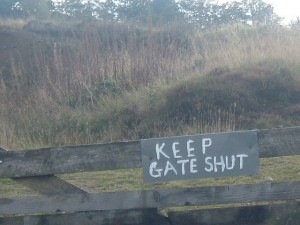Inventory Doesn’t Just Appear!

Stanley Howe, via Wikimedia Commons
Have you heard the expression about ‘shutting the gate, when the horse has bolted’?
It refers to trying to stop something happening when it has already happened. Seems like a silly thing to do, right?
But this is the approach that most companies take with respect to obsolete inventory in spare parts.
They don’t manage their spare parts inventory to prevent the accumulation of excessive quantities of obsolete inventory and then when this becomes an issue they expect that they can suddenly do something to make all the obsolete inventory go away. This is shutting the gate after the horse has bolted!
Obsolete inventory doesn’t just appear on the shelves, we put it there.
Maybe with initial good intent but minimizing obsolete inventory requires attention to detail and ongoing management. To do that properly you need to understand the three reasons you have obsolete inventory.
Three Reasons You Have Obsolete Inventory – And How to Deal With Them
- You buy too much in the first place.
Most obsolescence is created when the item is first purchased! What happens is that the initial purchase over-estimates the quantity required and then most of what is purchased is never used.
So one way to reduce obsolescence is to provide guidance to help decisions on what to purchase and how many. You do this with your stocking policy.
- You change items without using up old stock.
Another reason we get obsolescence is that technical people decide to use a different part and don’t use up the old stock first.
To manage this you need to ensure that documentation for new stores items includes comment on whether the new item is meant to be a replacement for an existing item. If so, a plan can be created to manage or dispose of the inventory that is being replaced.
- You don’t conduct regular reviews.
A third reason for obsolescence is that inventory is not reviewed to check if current levels are appropriate for current needs.
To do this you need to conduct, at least annually, a review of your high value items (say the top 500). This should not just check if the item is required but if it is required in the current quantities, if there are plans to reduce usage, or if there are plans to replace the item in the next year or so.
These are all issues that are within your control and so with appropriate management you should be able to have tight control on our potentially obsolete inventory.
For information on our Pro Level membership please visit our Pro Level page.
Posted by: Phillip Slater